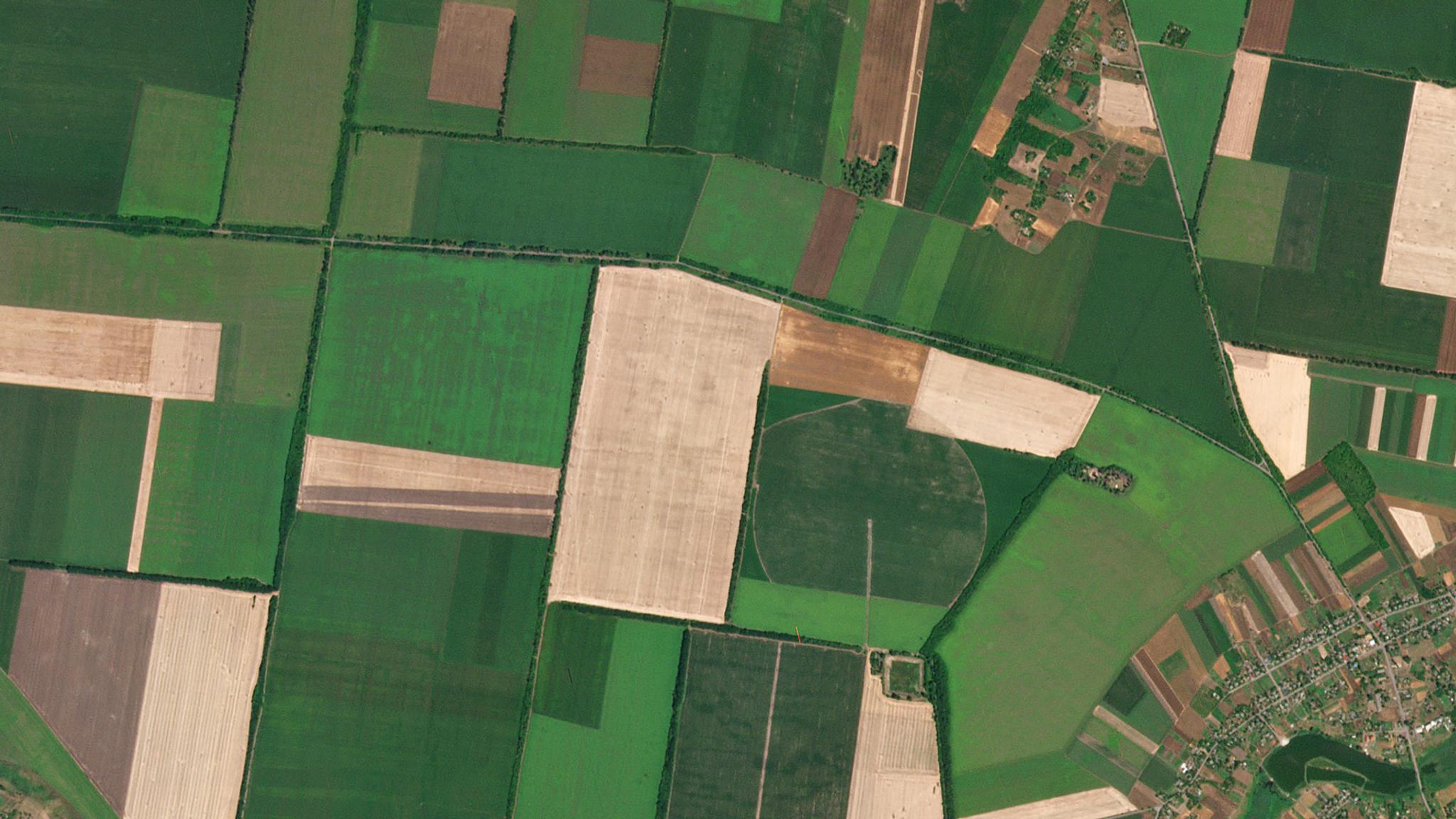Part 3: Carbon Farming - What Is It And What Does It Mean For Global Sustainability Efforts?

Agriculture outside of Kobeliaky, Poltava Oblast, Ukraine. July 12, 2020. © 2020, Planet Labs Inc. All Rights Reserved.
StoriesAgriculture lies at the heart of the European Union (EU). Within the borders of the EU, 39% of land is dedicated to agricultural practices and 37% of the EU budget is dedicated to support the sector, by far the largest recipient of EU funds. However, this sector also contributes 10% of EU greenhouse gas (GHG) emissions, proposing challenges to EU climate targets. The EU Green Deal, Europe’s ambitious strategy to become the first climate-neutral continent by 2050, is now working to transform the agriculture sector from a carbon emitter to a promising carbon sink. The practice of carbon farming, in particular, has been singled-out to play a key role in achieving these EU climate goals. The EU Green Deal includes a series of strategies targeted at the greening of the agriculture and forestry sectors. Amongst them, the ‘Farm to Fork’ strategy established the launch of the EU Carbon Farming Initiative by the end of 2021. This aims to promote a new farming model that rewards climate-friendly practices via the Common Agricultural Policy (CAP) and efficient carbon markets. Operating successful carbon markets requires effective carbon sequestration measurement and validation processes in order to reward farmers with credits and farm-level payment schemes. To help scale research in this field, Horizon Europe, the EU’s key funding program for research and innovation, now supports a number of novel projects that can reveal insights into exploring, quantifying, and validating efficient carbon farming practices. Planet organized a panel during EU Green Week presenting concrete projects applying Earth Observation data to support the European Green Deal’s ambitions in terms of sustainable agriculture. The session featured Bettina Baruth of the European Commission, Isabelle Piccard from Vito Remote Sensing, and Dragutin Protić, CEO and Co-Founder of Gilab. Each panelist spoke about how remote sensing data has revolutionized the way that sustainable agricultural practices and carbon farming in particular can be evaluated. In these projects, Earth Observation data is recognized as an important source of information to monitor the impact of agricultural management practices over time and support quantifying its effects on the reduction of greenhouse gas emissions. Today’s high spatial and temporal resolution satellites offer the possibility to monitor carbon farming processes over vast areas and scale up information which is collected at field level. This can be used both to identify gaps and drive the decision-making process in the agricultural sector towards reaching the emission reduction targets. In one such project, Gilab’s Co-Founder and CEO, Dragutin Protić presented the concept for the platform which will be built in AgriCapture, an EU-funded Horizon 2020 project of which Planet is also a partner. This platform looks to make it more profitable and easier for farmers to adopt regenerative agriculture practices including crop rotation, cover crops, low or no tillage, and agroforestry to increase carbon sequestration, improve soil health, increase biodiversity, and provide economic benefits to farmers. To do so, AgriCapture uses multiple data streams from Earth Observation, machine learning, and field-level soil sampling to explore and quantify how such practices can be measured and verified for regenerative agriculture and carbon credit certification schemes. To accelerate the accurate assessment and implementation of carbon farming practices, AgriCapture relies on different Earth observation datasets, soil data and machine learning models to help infer stocks of soil organic carbon for the entirety of Europe. The platform also intends to use satellite imagery to verify farmers’ compliance with carbon farming practices and generate a validation service for a carbon capture certification program. While public Landsat and Sentinel data provide a base data layer, agricultural vegetation is highly dynamic and Planet’s high-resolution, high cadence imagery is critical for the success of this project. “There is common understanding that Earth Observation data is the primary technology to support and monitor the implementation of the policies,” said Protić. “It is very important to also involve high-resolution satellites. This is why we have Planet on board. We will use Planet Fusion which offers 3 meter resolution, daily data that is spectrally compatible with Sentinel-2 and enables continuous monitoring. We will use it to fill the gaps in the time series of optical Sentinel imagery. We will also use the high spatial resolution of the Planet Fusion product for example for agroforestry and for extracting the smaller ecological features that we cannot achieve with 10 or 20 m Sentinel satellites.“ This level of integrated Earth Observation data is a necessary tool for the EU as it transforms agriculture into a key sector in the fight against climate change. At the policy level, it is clear that investment in Earth observation technology and innovative workflows leveraging machine learning algorithms will help scale the utility and effectiveness of carbon markets across the region. Moving forward, Planet’s satellites provide unique rapid-revisit capabilities that can have a direct and widespread impact on the evaluation of carbon capture practices and drive the EU towards the target of climate-neutrality. If you want to learn more about the carbon farming revolution sign up for our annual conference in October and hear from the leaders of the European Carbon+ Farming Coalition, a farmer-centric initiative created by the World Economic Forum’s CEO Action Group for the European Green Deal to accelerate progress toward European Green Deal carbon neutrality goals.

Ready to Get Started
Connect with a member of our Sales team. We'll help you find the right products and pricing for your needs

